Abstract
The electron spin resonance signals of wild type Chlamydomonas reinhardi and three mutant strains having impaired photosynthesis have been investigated. The wild type strain generates two different electron spin resonance signals. Signal I is obtained without illumination (i.e., dark signal) whereas signal II is generated preferentially only by red light. Signal I is missing from wild type cells that have been cultured in the dark, but it returns after these dark-grown cells have been illuminated. Chloroplast fragments obtained from the three mutant strains cannot photoreduce TPN. Two of the strains lack the dark signal I while the third strain has both signal I and signal II. Other studies have revealed that the two mutant strains which lack signal I give no Hill reaction but that they can photoreduce TPN if supplied with an artificial reductant. The mutant strain which has both electron spin resonance signals can carry out the Hill reaction, yet it too will not photoreduce TPN unless reductant is supplied. The electron spin resonance signals generated by the wild type and mutant strains are discussed in terms of the pathway of TPN photoreduction, and it is suggested that signal I is associated with one of the two light-dependent phases of this pathway.
Full text
PDF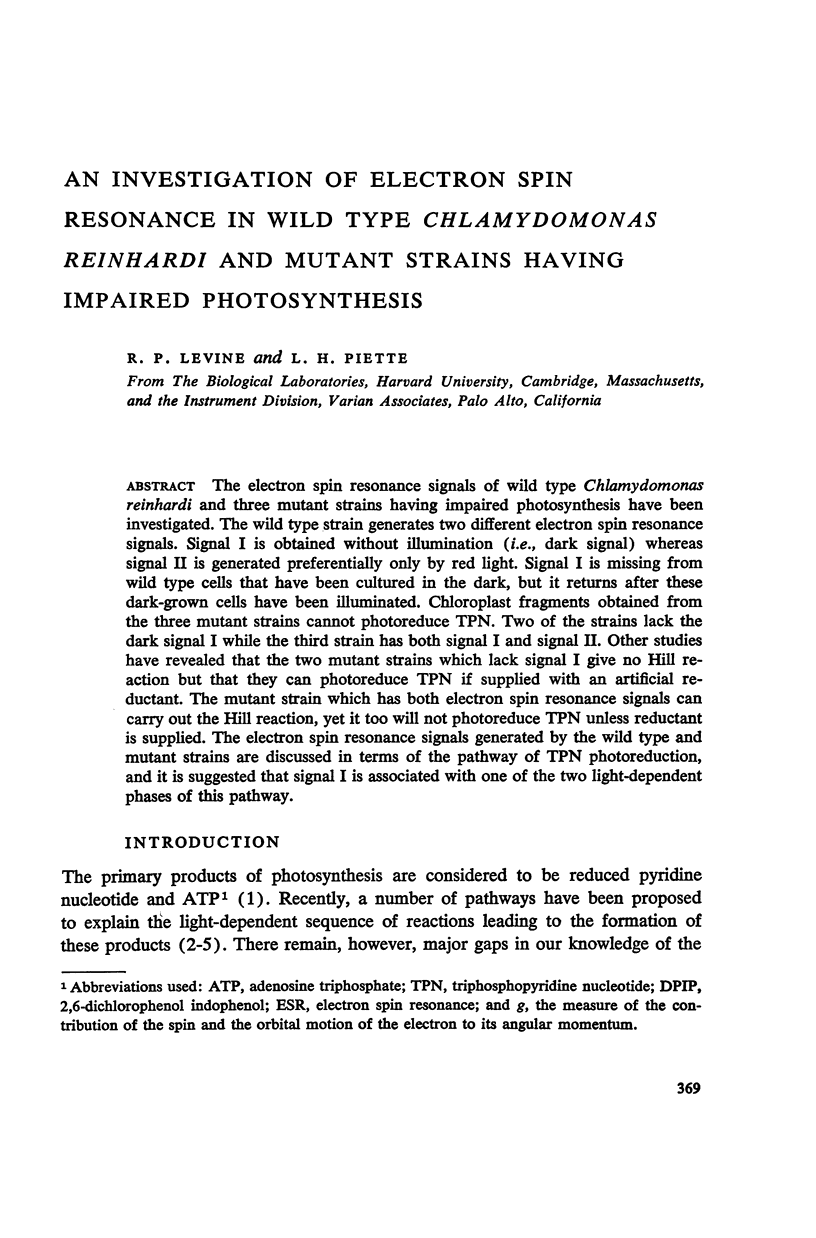
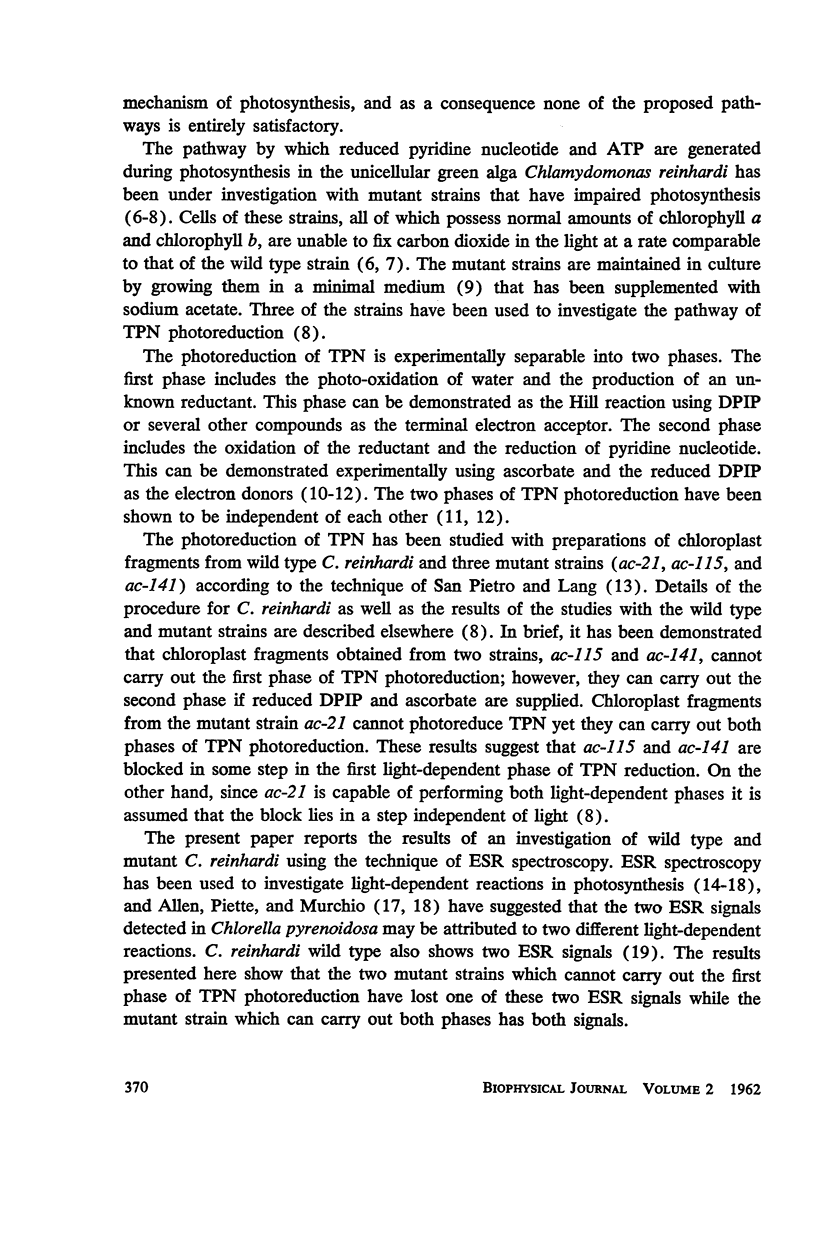
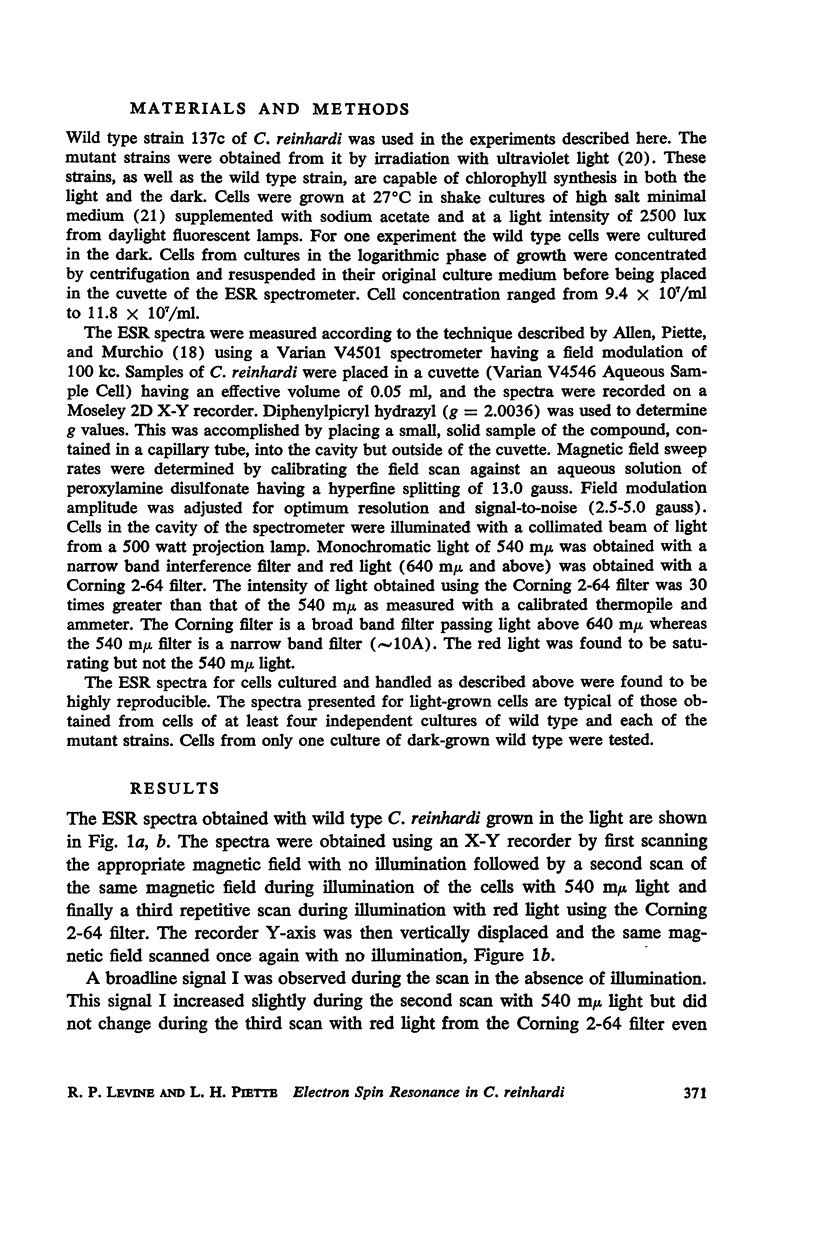
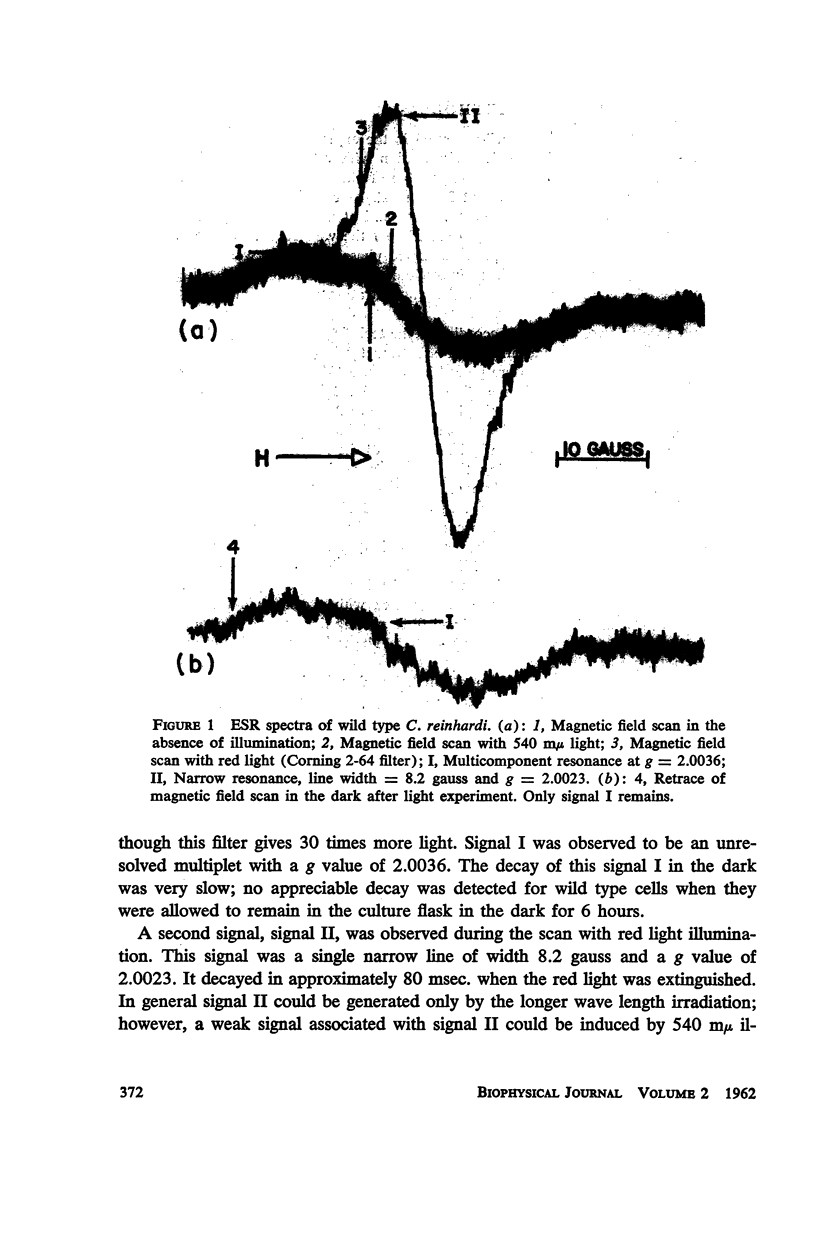
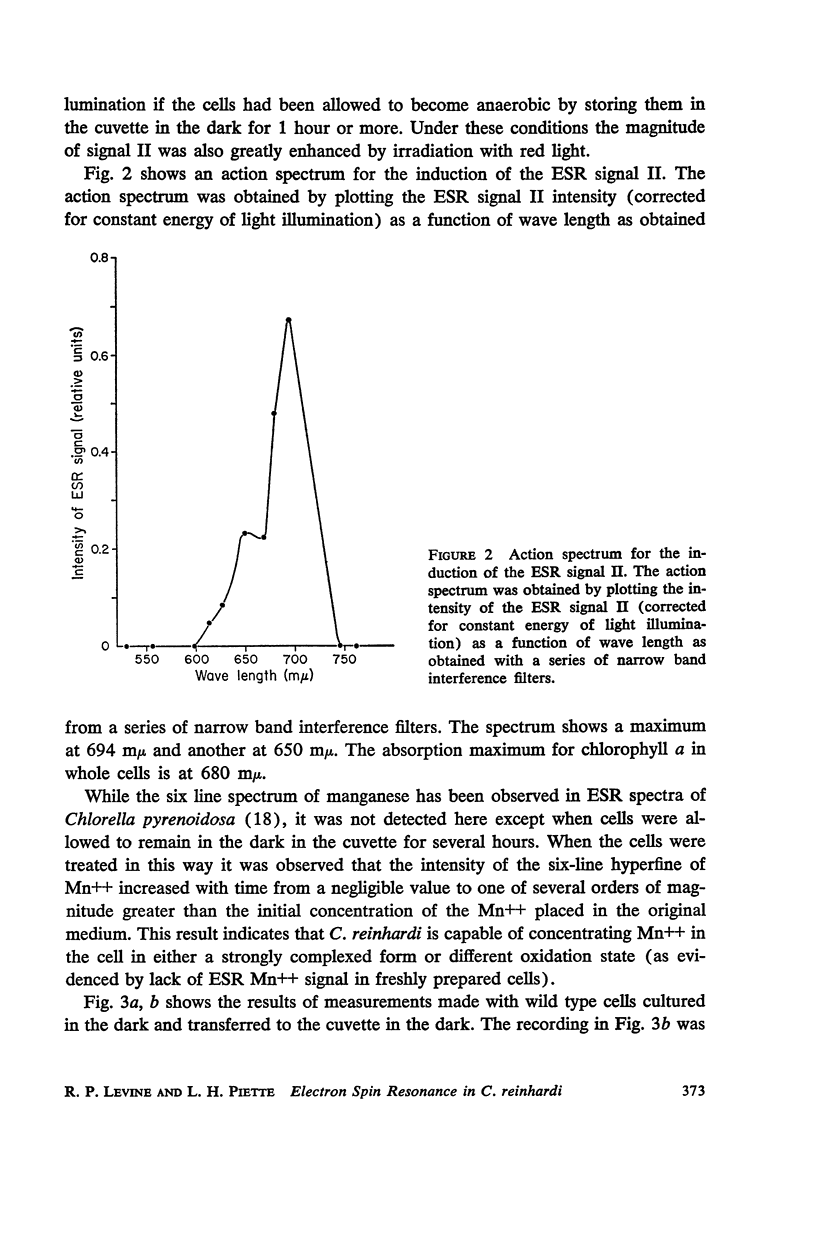

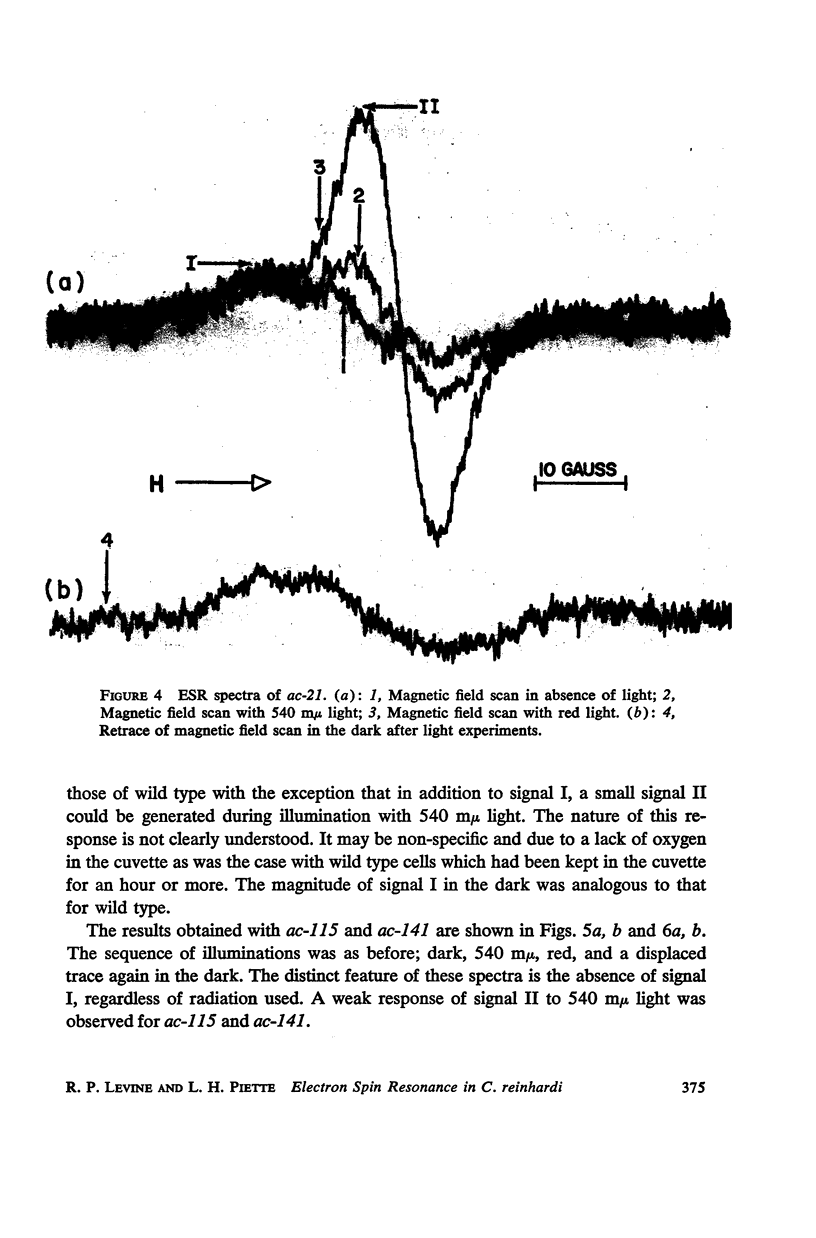
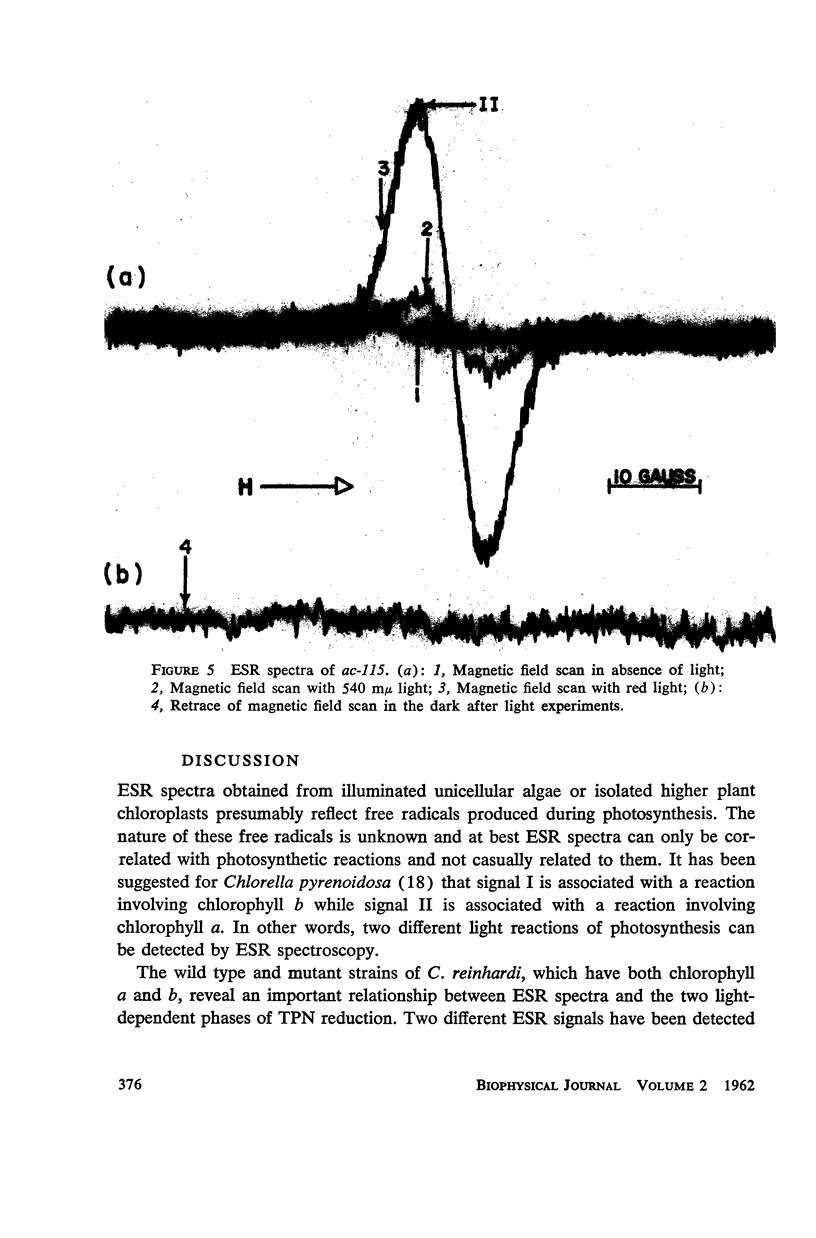
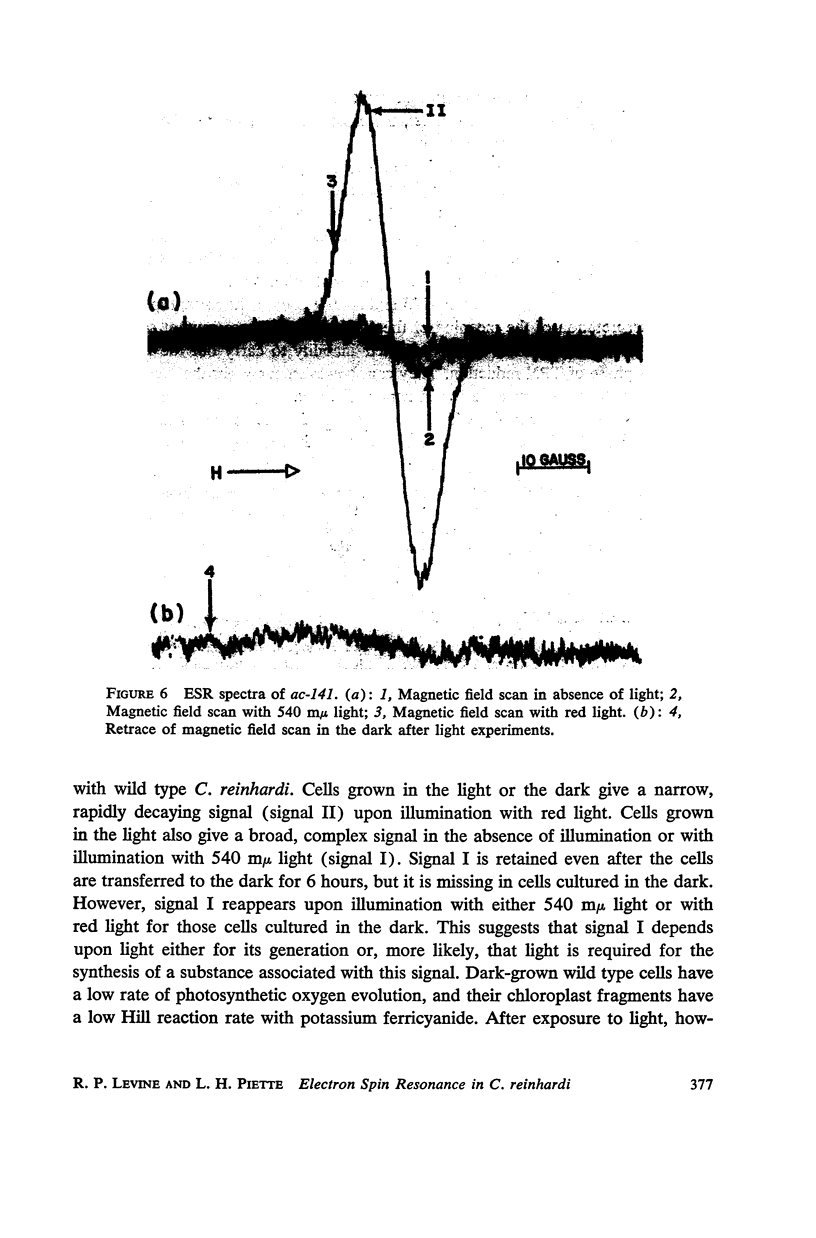
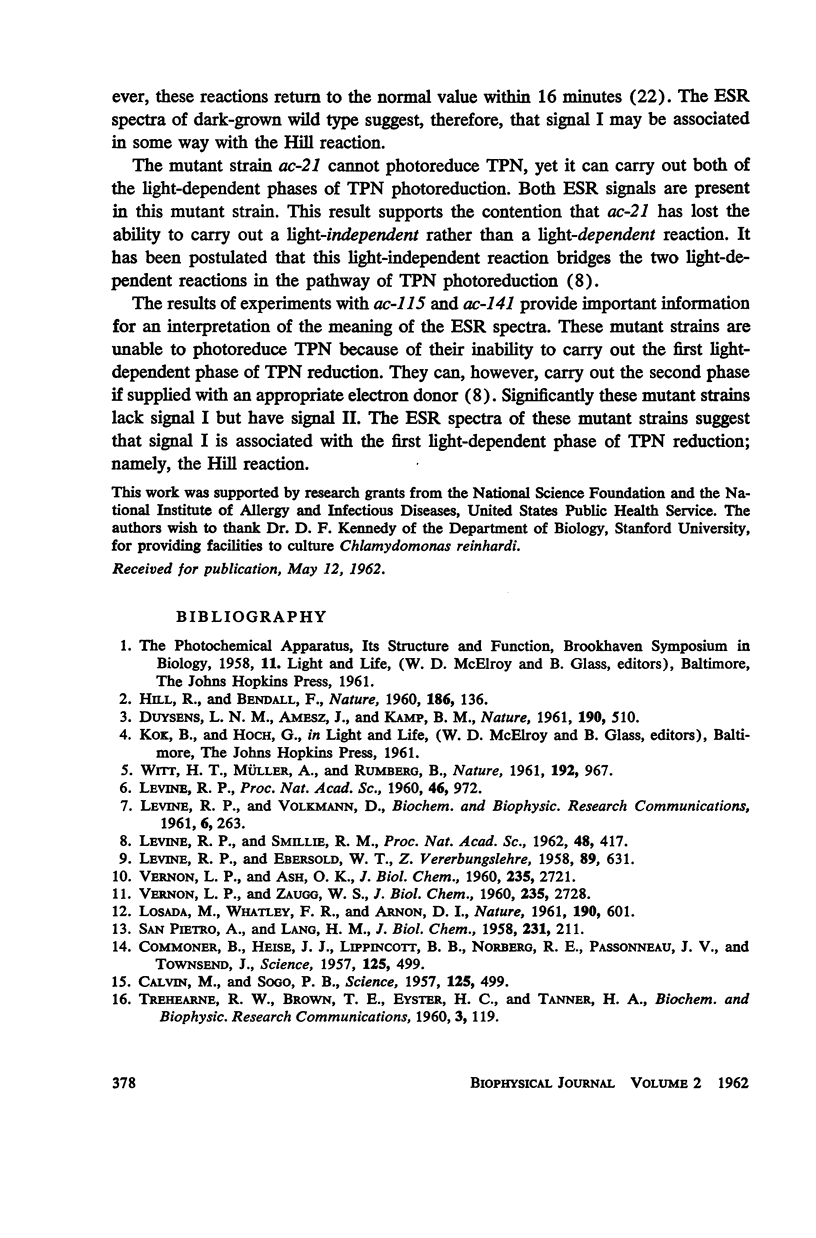
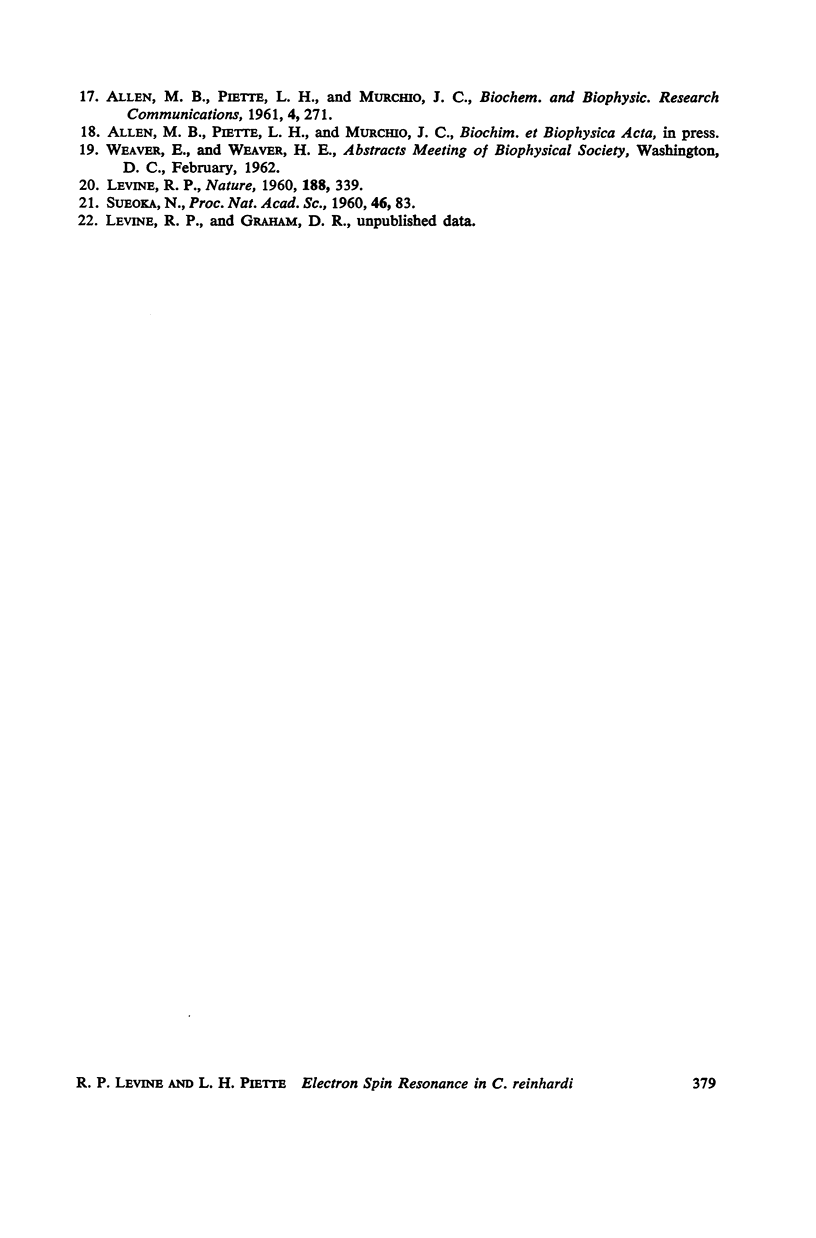
Selected References
These references are in PubMed. This may not be the complete list of references from this article.
- ARNON D. I., LOSADA M., NOZAKI M., TAGAWA K. Photoproduction of hydrogen, photofixation of nitrogen and a unified concept of photosynthesis. Nature. 1961 May 13;190:601–606. doi: 10.1038/190601a0. [DOI] [PubMed] [Google Scholar]
- Calvin M., Sogo P. B. Primary Quantum Conversion Process in Photosynthesis: Electron Spin Resonance. Science. 1957 Mar 15;125(3246):499–500. doi: 10.1126/science.125.3246.499. [DOI] [PubMed] [Google Scholar]
- Calvin M., Sogo P. B. Primary Quantum Conversion Process in Photosynthesis: Electron Spin Resonance. Science. 1957 Mar 15;125(3246):499–500. doi: 10.1126/science.125.3246.499. [DOI] [PubMed] [Google Scholar]
- DUYSENS L. N., AMESZ J., KAMP B. M. Two photochemical systems in photosynthesis. Nature. 1961 May 6;190:510–511. doi: 10.1038/190510a0. [DOI] [PubMed] [Google Scholar]
- LEVINE R. P. A screening technique for photosynthetic mutants in unicellular algae. Nature. 1960 Oct 22;188:339–340. doi: 10.1038/188339b0. [DOI] [PubMed] [Google Scholar]
- LEVINE R. P., EBERSOLD W. T. The relation of calcium and magnesium to crossing over in Chlamydomonas reinhardtii. Z Vererbungsl. 1958;89(5):631–635. doi: 10.1007/BF00888552. [DOI] [PubMed] [Google Scholar]
- LEVINE R. P., SMILLIE R. M. The pathway of triphosphopyridine nucleotide photoreduction in Chlamydomonas reinhardi. Proc Natl Acad Sci U S A. 1962 Mar 15;48:417–421. doi: 10.1073/pnas.48.3.417. [DOI] [PMC free article] [PubMed] [Google Scholar]
- SAN PIETRO A., LANG H. M. Photosynthetic pyridine nucleotide reductase. I. Partial purification and properties of the enzyme from spinach. J Biol Chem. 1958 Mar;231(1):211–229. [PubMed] [Google Scholar]
- Sueoka N. MITOTIC REPLICATION OF DEOXYRIBONUCLEIC ACID IN CHLAMYDOMONAS REINHARDI. Proc Natl Acad Sci U S A. 1960 Jan;46(1):83–91. doi: 10.1073/pnas.46.1.83. [DOI] [PMC free article] [PubMed] [Google Scholar]
- VERNON L. P., ASH O. K. Coupled photooxidation and photoreduction reactions and associated phosphorylation by chromatophores of Rhodosprillum rubrum. J Biol Chem. 1960 Sep;235:2721–2727. [PubMed] [Google Scholar]
- VERNON L. P., ZAUGG W. S. Photoreductions by fresh and aged chloropasts: requirement for ascorbate and 2, 6-dichlorophenolindophenol with aged chloroplasts. J Biol Chem. 1960 Sep;235:2728–2733. [PubMed] [Google Scholar]


